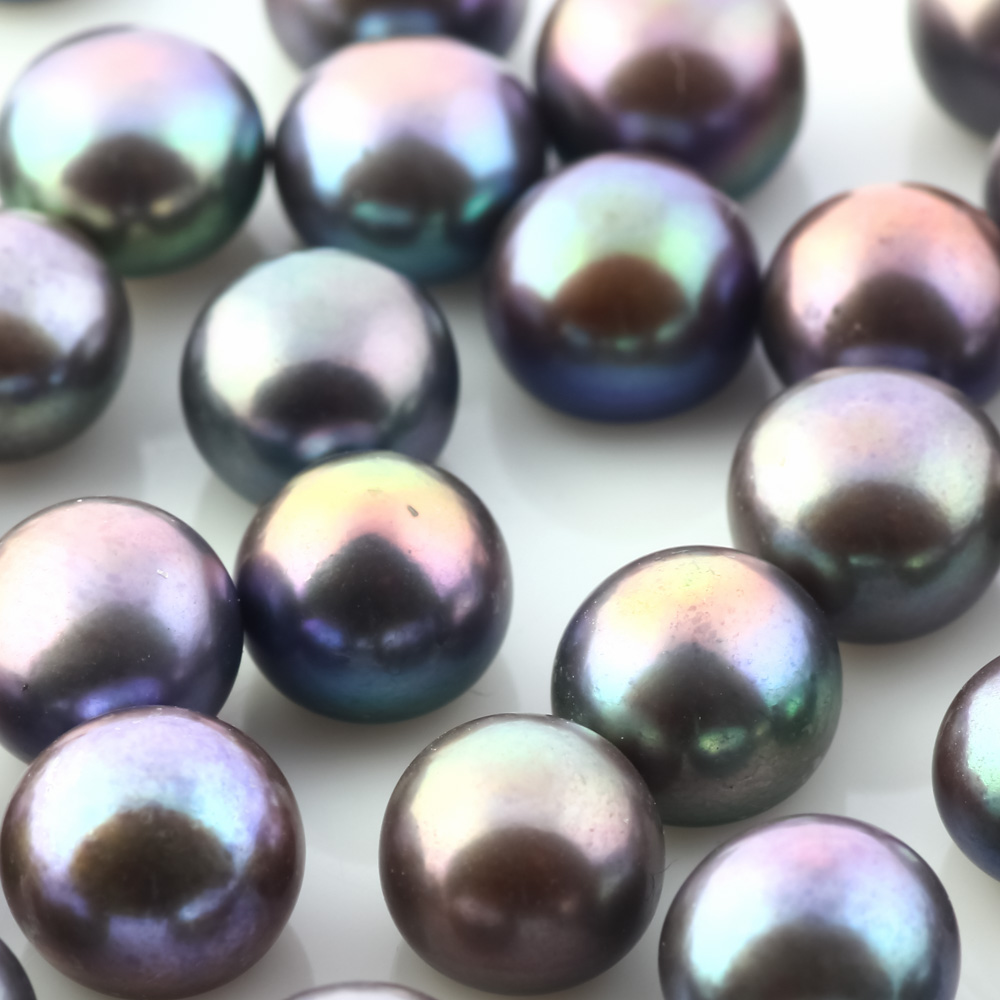The first thing I am going to say is that pearls are treated, most of them, in one way or another. Let’s just get that out of the way. Even the most beautiful and expensive South Sea and Akoya pearls are likely to have some kinds of bleaching and for the pearls that I sell, they are definitely bleached. Let’s just have a brief walk-through the pearl landscape as it were. Most expensive and desirable are natural saltwater pearls; now extremely rare. It was the main source of wealth and the Arabian Gulf until the 1950s; of course once oil was discovered, pearls were eclipsed and in fact, many of the ancient pearl beds were torn up and destroyed. Most saltwater pearls are now cultured, and tend to come from the same sort of places that natural ones came from; for example Myanmar, China, Australia, French Polynesia and Africa to name a few. I deal mainly in cultured freshwater pearls; grown mainly in China on pearl farms; this is a very established industry that can yield very beautiful and affordable pearls. Even with these, there is huge variation with the very cheap, quickly-grown potato pearls competing with slower grown, more lustrous varieties.
Today I’m looking at peacock pearls. Natural black, South Sea or Tahtian pearls have a satiny, rather than high, lustre. With a dark green-grey body colour and a purple, pink, blue or gold overtone that appears to float on the surface of the pearl as the light catches it, these are magical, mysterious, iridescent pearls. These are beautiful and eye-wateringly expensive.
It’s not surprising, then, that artificial colour treatments have been developed, and this is what I want to talk about today. Treated peacock pearls are usually first soaked in silver nitrate (the same chemical that makes photographic film sensitive), then either exposed to light or hydrogen sulphide gas. This turns the pearls black. They are then dyed to achieve the colourful characteristic overtones. How do you tell them apart from the real thing? As with most things, if they look too good to be true, they probably are. That, and price. If the lustre is too high, the colours too bright, they are probably dyed. Size is another; South Sea and Tahitian pearls don’t normally come in sizes below 8mm – anything smaller than that and you are probably dealing with a treated pearl. It goes without saying that this should be stated, and I wouldn’t personally even describe a pearl as ‘like South Sea’ or ‘like Tahitian’ due to the potential for confusion. However, if you do want your treated peacocks to look a bit more like the real thing, then there are a few simple rules:
- Step away from the lustre. As stated, real South Sea pearls have a satiny lustre; the high, almost metallic lustre is something that you might see on the banded Tahitian varieties, but generally, look for less lustrous pearls
- Colour. The colours of treated peacock pearls are vibrant and beautiful, but to get a more authentic appearance, go for pearls that have more of a subtle colouring, with a more grey and less black body-colour
This is why I’m particularly excited about the 8mm half-drilled peacock pearls I have just listed, as they do fulfill both of these criteria. Not that I’m for a minute suggesting that you pass them off as real, just that if you are looking for a more authentic, less ‘oil-on-water’ appearance, these are a really good option; a lovely grey body-colour with subtle overtone. Check them out here.
A Note on Pearl Grading
Pearls is a funny business. Every time I shop, I have to reinvent the wheel, as just because one company had beautiful pearls a year ago, doesn’t mean that they will next time they restock. Another thing you have to realise is that there is no standardisation in terms of quality grading. A pearl company will sort its pearls in terms of the qualities that they hold, and so one company’s AAA is another’s AA and so on. Also – and this is a really funny one – AAA+ is less good than AAA. Just so you know. For me, there is nothing that takes the place of painstakingly going round suppliers and carefully comparing by eye to get the best quality for the price you want.
joopygems.com














